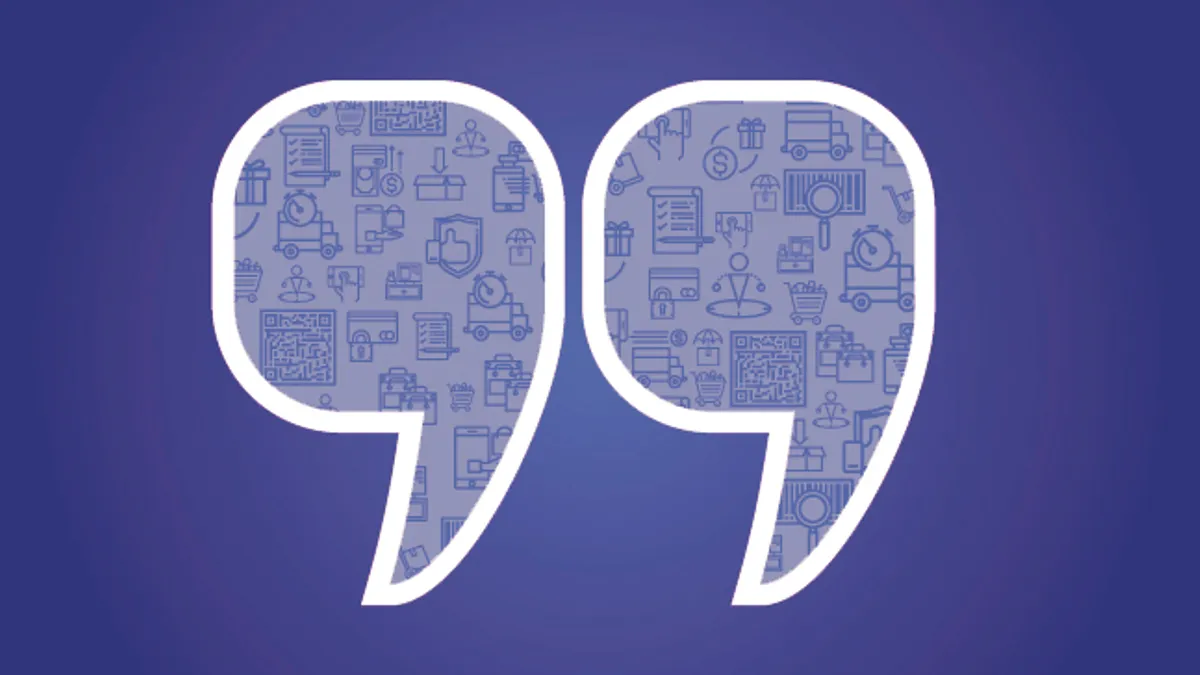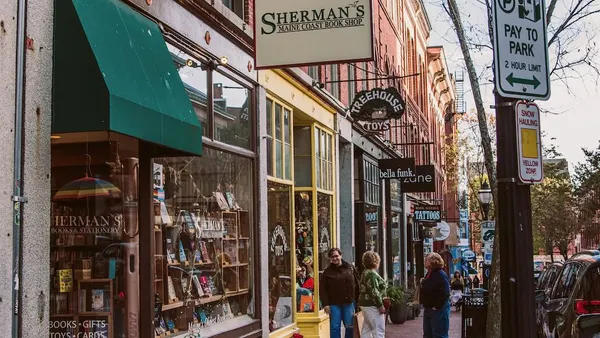Tariff and inflation jitters have colored U.S. consumers’ outlook for much of the year, and now the holiday shopping season is commencing with a sense of instability across income levels.
This year, optimism about the economy took a turn for the worse, and recently even dipped among higher-income consumers, according to William Blair analysts led by Sharon Zackfia.
“This steep increase in pessimism suggests growing concern among consumers, likely driven by persistent inflation, geopolitical uncertainty, and tariff-related disruptions,” Zackfia said in a research note last month. “While there was a modest uptick in those feeling ‘much more optimistic’ (12% to 14%), the overall tone is clearly more negative than last year.”
The slide continued this month, as consumer sentiment fell about 6% in November so far, according to the most recent survey from the University of Michigan, released Friday. The drop was driven by lower expectations for business conditions in the year ahead as well as by a deterioration in personal finances. The outlook reflected concerns about how the prolonged government shutdown might affect the economy and was shared by people across age, income and political groups, except for those with large stock holdings, per that report.
Younger consumers, whose wages are growing more slowly, are reporting personal budget cuts in greater numbers, per William Blair. But the U.S. employment picture is dimming in general, with the highest level of layoffs in 22 years last month, according to outplacement firm Challenger, Gray and Christmas. In addition to rising unemployment, hiring has slowed, which makes the labor situation more dire, UBS economists warned in September.
All this is shaping how, when and how much shoppers will spend this season, and complicates the holidays for retailers. Or, at least, complicates them further, as retailers have grappled with their own challenges around tariffs throughout the year, affecting key operations like inventory management, pricing and marketing.
Here’s how consumers plan to get through the holidays this year.
Shopping early
Whether to stretch their budgets, grab inventory before it runs out or take advantage of autumn sales, shoppers are getting a jump on their holiday lists this year. There were hints as early as this summer, when searches for “Christmas” on Faire, a wholesale marketplace focused on U.S. brands, jumped 124% from June to July.
More than 40% of U.S. consumers say they plan to start shopping for the holidays earlier than they usually do, and nearly half plan to start before Thanksgiving, according to Circana. If that research holds, less than 20% will wait until December — the fewest last-minute shoppers in four years.
“Today’s consumer is more focused on planning and prioritizing on their quest for value,” Marshal Cohen, Circana chief retail adviser, said in a statement. “Getting an earlier start on holiday shopping gives them more control and choice when it comes to making a purchase decision, rather than feeling the pressure of filling a last-minute need.”
Putting off payment
Consumers this year may be starting earlier, but they’re paying later.
More than three-quarters of U.S. consumers now use buy now, pay later services, according to a LegalShield survey. About half of BNPL users told the firm that they plan to purchase more this holiday season, and about 45% said they would use BNPL more often this year to buy gifts.
Similarly, PayPal found that half of holiday shoppers plan to take advantage of buy now, pay later, and more than half say they’re more likely to complete purchases when BNPL is an option.
The growing popularity of BNPL means greater risk for consumers, however, especially since FICO has begun to take this type of credit into account, according to LegalShield. More than 70% of Gen Z consumers use BNPL, but don’t have a good understanding of the credit implications.
There is also a downside for retailers, especially smaller stores, when confused shoppers dispute a BNPL charge, per that report.
Seeking value
Anyone worried about the economy and employment outlook is going to rein in spending on discretionary items. When people do spend, they’ll be on the lookout for good deals.
Nearly three-quarters of consumers surveyed by William Blair report making cutbacks, many of them younger and in lower-income brackets. Apparel took the biggest hit, with nearly 60% saying they’re spending less on clothing — nearly 30% more than a year ago.
But budgets for groceries, restaurants, travel and electronics are also shrinking.
“These shifts suggest that while inflation across necessities remains a key concern, consumers are recalibrating their spending more aggressively in discretionary and lifestyle categories,” William Blair analysts said.
PayPal executives told analysts that spending softened in the third quarter. The number of transactions went up, but basket sizes or average order value dropped, according to Jamie Miller, PayPal chief financial and operating officer. “We’ve observed this trend continuing through October,” Miller said during a late-October conference call.
The holidays are a time when many people expect to have to spend. But well over a third of holiday shoppers plan on buying more on sale, and the money-saving mindset has many waiting around for promotions to before making a purchase, Circana found. This includes Black Friday, which nearly a quarter of consumers see as the best time to find a deal, per that report.
“Even with lower prices, consumers have become less impulsive – doubling down on their ‘need now, buy now’ mindset,” Circana’s Cohen said. “Marketers need to continue to assess ways to achieve dynamic success with consumers by making their brand, their store, a destination that hits the mark on product and value at the right time.”






















